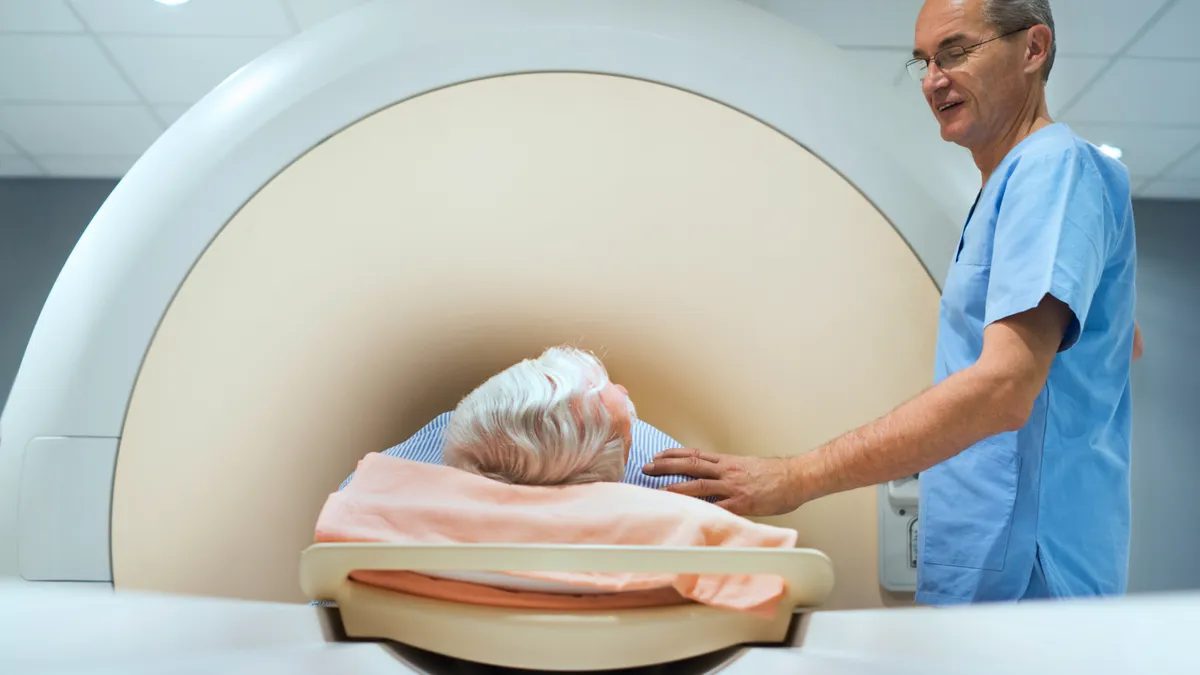Dive Brief:
- Scientists at the National Institute of Standards and Technology (NIST) are proposing a new way to calibrate computed tomography (CT) scanners that could lead to a universal standard aimed at improving comparison of scans from different machines.
- The approach would help establish the first CT measurement standards connected to the International System of Units by creating a more precise definition of the units used in CT.
- Better calibration of CT scanners could make diagnosis more efficient and less costly, the NIST scientists wrote in a paper published in the journal PLOS One.
Dive Insight:
The field of radiology has lacked a system of interchangeable measurements for calibrating CT machines, an action healthcare facilities have to take regularly.
Calibration involves scanning an object called a phantom, with known radiodensity, to check whether its measurements give the appropriate number of Hounsfield Units (HUs). An object's radiodensity, or its ability to block X-rays, is measured in HUs.
To create a universal standard for calibration among scanners, scientists must overcome several challenges in addition to harmonizing differences among CT machine manufacturers, the NIST researchers said.
One challenge is that a CT scanner's tube creates a beam of photons of different wavelengths with an overall effect on the phantom which must be averaged. Another complexity is that the tube's X-ray light changes depending on the type of scan.
More penetrating X-rays are needed for denser body parts, so the scanner's operator must adjust the tube voltage to match the job. This variability in the spectrum of the beam makes it harder to ensure that the calibration is correct for all voltages, the NIST researchers said.
To overcome the uncertainties created by the tube's broad X-ray spectrum and tube voltage setting, the NIST researchers filled several phantoms with different concentrations of powdered chemicals that are common in the body and compared their radiodensity using CT. The comparison linked HUs to the number of moles per cubic meter, which are both SI units.
The NIST researchers said better comparisons among scanners could lead to the establishment of cutoff points for disease, such as assigning a particular Hounsfield score to emphysema. It might also eliminate the need for a second imaging procedure.










